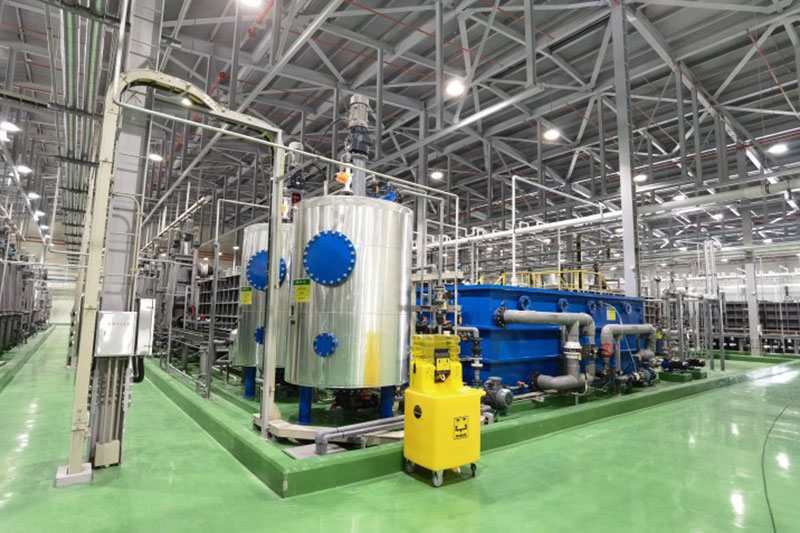Equipo de desengrase de microinterfaces
Obtención de la certificación ISO9001.
Productos patentados con múltiples diseños estructurales.
Posee tecnología patentada básica.
Excelente rendimiento de sellado y ventajas como el sistema de escape integral.
El diseño general puede realizarse según los requisitos del cliente.
Consulte la información sobre nuestra fábrica para conocernos mejor.
Póngase en contacto con nosotros lo antes posible para obtener presupuestos en tiempo real.
Manténgase al día de la información más reciente sobre el TYIC.
Equipo de desengrase de microinterfaces is a high-efficiency, eco-friendly precision cleaning solution designed to remove microscopic grease, particulate contaminants, and oxide layers at submicron levels. By integrating nanobubble technology, high-frequency ultrasonic waves, and low-pressure vacuum environments, it achieves ultra-clean surfaces without damaging substrates, making it ideal for complex geometries like microchips, miniature bearings, and precision molds.
Key Advantages
- Ultra-Precision Cleaning
Nanobubbles penetrate micropores, blind holes, and crevices to eliminate residues inaccessible to conventional methods (cleanliness ≤0.1μm particles). - Eco-Friendly Operation
Uses aqueous biodegradable solvents o supercritical CO₂ instead of traditional VOCs, complying with RoHS/REACH regulations. - Rapid Drying
Vacuum-assisted drying with pulsed hot air completes the process in ≤5 minutes, eliminating watermarks. - Automation Integration
Compatible with robotic arms, conveyors, and MES systems for unmanned production lines.
Applications
- Semiconductor Industry: Post-dicing wafer grease removal.
- Medical Devices: Microporous degreasing and sterilization prep for surgical tools.
- Aerospace: Surface activation of turbine blades before coating.
- 3C Electronics: Precision cleaning of smartphone frames and connectors.
How does micro-interface degreasing outperform traditional ultrasonic cleaning?
Conventional ultrasonics rely on cavitation at ≤40kHz, struggling with microscopic contaminants. Our system employs dual-frequency ultrasonic waves (80kHz + 120kHz) y micro-jet technology to target residues directly, tripling efficiency while preventing cavitation damage to delicate parts.
How are high-viscosity/cured greases treated?
For stubborn residues (e.g., silicone grease, epoxy), we integrate a low-temperature plasma pretreatment module to break down molecular chains via ion bombardment. Coupled with a thermostatic solvent circulation system (50–70°C), this ensures residue-free removal. For example, an automotive client achieved SAE AS4059 Class 3 cleanliness for gearbox components.
Is the equipment compatible with diverse materials?
Yes. Adaptive parameter control** (frequency, temperature, pressure) ensures safe cleaning of aluminum, titanium alloys, ceramics, and polymer composites. For carbon fiber parts, the system auto-switches to neutral electrolytes and disables alkaline solvents.
How is pollution-free operation ensured?
Closed-loop filtration: 0.1μm filters capture particulates, achieving ≥95% solvent reuse.
- Zero VOC emissions: Catalytic combustion treats exhaust gases to meet GB16297-1996 standards.
- Traceable materials: All contact parts are 316L stainless steel or PTFE to prevent cross-contamination.
CUALQUIER COSA QUE NO PUDIERAS ENCONTRAR?
Ventajas de nuestra empresa
TYIC se centra en el mercado mundial. Contamos con las siguientes ventajas:
- Ciclo de pago personalizado
- Bajo coste
- Equipo técnico profesional
- Estricto control de calidad.
- Respuesta rápida o entusiasmo.
ENVÍENOS UN CORREO ELECTRÓNICO
Solicitar presupuesto
De acuerdo con los requisitos del cliente y las características del producto, completar la planificación y el diseño de todo el conjunto de la línea de producción de lixiviación y extracción.
